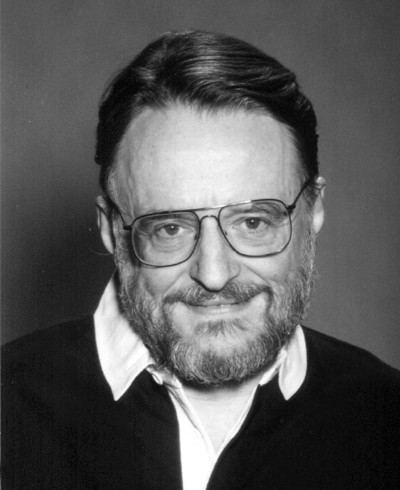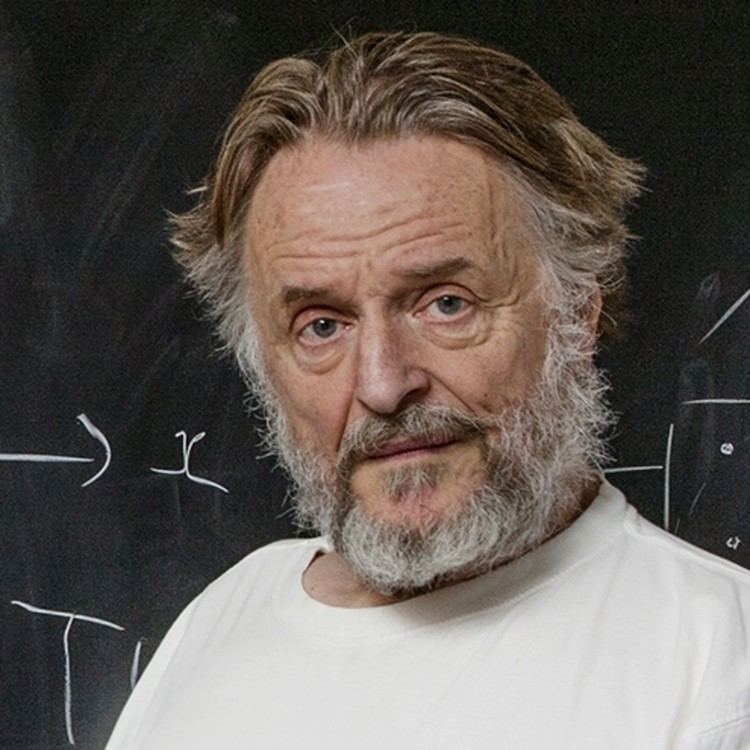Name John Conway Nationality British Role Mathematician | Fields Mathematics | |
 | ||
Thesis Homogeneous ordered sets (1964) Parents Cyril Horton Conway, Agnes Boyce Books On Numbers and Games, The book of numbers, Sphere packings - lattices - a, The sensual (quadrati, Regular algebra and finite Similar People | ||
Genius at play the curious mind of john horton conway by siobhan roberts
John Horton Conway FRS (; born 26 December 1937 – 11 April 2020) was an English mathematician active in the theory of finite groups, knot theory, number theory, combinatorial game theory and coding theory. He has also contributed to many branches of recreational mathematics, notably the invention of the cellular automaton called the Game of Life. Conway is currently Professor Emeritus of Mathematics at Princeton University in New Jersey.
Contents
- Genius at play the curious mind of john horton conway by siobhan roberts
- John horton conway on his love hate relationship with life talks at google
- Education and early life
- Conways Game of Life
- Conway and Martin Gardner
- Combinatorial game theory
- Geometry
- Geometric topology
- Group theory
- Number theory
- Algebra
- Analysis
- Algorithmics
- Theoretical physics
- Awards and honours
- Publications
- Biography
- Death
- References

John horton conway on his love hate relationship with life talks at google
Education and early life

Conway was born in Liverpool, the son of Cyril Horton Conway and Agnes Boyce. He became interested in mathematics at a very early age; his mother has recalled that he could recite the powers of two when he was four years old. By the age of eleven his ambition was to become a mathematician.

After leaving secondary school, Conway entered Gonville and Caius College, Cambridge to study mathematics. Conway, who was a "terribly introverted adolescent" in school, interpreted his admission to Cambridge as an opportunity to transform himself into a new person: an "extrovert".

He was awarded his Bachelor of Arts degree in 1959 and began to undertake research in number theory supervised by Harold Davenport. Having solved the open problem posed by Davenport on writing numbers as the sums of fifth powers, Conway began to become interested in infinite ordinals. It appears that his interest in games began during his years studying the Cambridge Mathematical Tripos, where he became an avid backgammon player, spending hours playing the game in the common room. He was awarded his doctorate in 1964 and was appointed as College Fellow and Lecturer in Mathematics at the University of Cambridge.
After leaving Cambridge in 1986, he took up the appointment to the John von Neumann Chair of Mathematics at Princeton University.
Conway is an atheist.
Conway's Game of Life
Conway is especially known for the invention of the Game of Life, one of the early examples of a cellular automaton. His initial experiments in that field were done with pen and paper, long before personal computers existed.
Since the game was introduced by Martin Gardner in Scientific American in 1970, it has spawned hundreds of computer programs, web sites, and articles. It is a staple of recreational mathematics. There is an extensive wiki devoted to curating and cataloging the various aspects of the game. From the earliest days it has been a favorite in computer labs, both for its theoretical interest and as a practical exercise in programming and data display. At times Conway has said he hates the Game of Life–largely because it has come to overshadow some of the other deeper and more important things he has done. Nevertheless, the game did help launch a new branch of mathematics, the field of cellular automata.
The Game of Life is now known to be Turing complete.
Conway and Martin Gardner
Conway's career is intertwined with mathematics popularizer and Scientific American columnist Martin Gardner. When Gardner featured Conway's Game of Life in his Mathematical Games column in October 1970, it became the most widely read of all his columns and made Conway an instant celebrity. Gardner and Conway had first corresponded in the late 1950s, and over the years Gardner had frequently written about recreational aspects of Conway's work. For instance, he discussed Conway's game of Sprouts (Jul 1967), Hackenbush (Jan 1972), and his angel and devil problem (Feb 1974). In the September 1976 column he reviewed Conway's book On Numbers and Games and introduced the public to Conway's surreal numbers. Conferences called Gathering 4 Gardner are held every two years to celebrate the legacy of Martin Gardner, and Conway himself is often a featured speaker at these events, discussing various aspects of recreational mathematics.
Combinatorial game theory
Conway is widely known for his contributions to combinatorial game theory (CGT), a theory of partisan games. This he developed with Elwyn Berlekamp and Richard Guy, and with them also co-authored the book Winning Ways for your Mathematical Plays. He also wrote the book On Numbers and Games (ONAG) which lays out the mathematical foundations of CGT.
He is also one of the inventors of sprouts, as well as philosopher's football. He developed detailed analyses of many other games and puzzles, such as the Soma cube, peg solitaire, and Conway's soldiers. He came up with the angel problem, which was solved in 2006.
He invented a new system of numbers, the surreal numbers, which are closely related to certain games and have been the subject of a mathematical novel by Donald Knuth. He also invented a nomenclature for exceedingly large numbers, the Conway chained arrow notation. Much of this is discussed in the 0th part of ONAG.
Geometry
In the mid-1960s with Michael Guy, son of Richard Guy, Conway established that there are sixty-four convex uniform polychora excluding two infinite sets of prismatic forms. They discovered the grand antiprism in the process, the only non-Wythoffian uniform polychoron. Conway has also suggested a system of notation dedicated to describing polyhedra called Conway polyhedron notation.
In the theory of tessellations, he devised the Conway criterion which describes rules for deciding if a prototile will tile the plane.
He investigated lattices in higher dimensions, and was the first to determine the symmetry group of the Leech lattice.
Geometric topology
In knot theory, Conway formulated a new variation of the Alexander polynomial and produced a new invariant now called the Conway polynomial. After lying dormant for more than a decade, this concept became central to work in the 1980s on the novel knot polynomials. Conway further developed tangle theory and invented a system of notation for tabulating knots, nowadays known as Conway notation, while correcting a number of errors in the 19th century knot tables and extending them to include all but four of the non-alternating primes with 11 crossings [Topology Proceedings 7 (1982) 118].
Group theory
He was the primary author of the ATLAS of Finite Groups giving properties of many finite simple groups. Working with his colleagues Robert Curtis and Simon P. Norton he constructed the first concrete representations of some of the sporadic groups. More specifically, he discovered three sporadic groups based on the symmetry of the Leech lattice, which have been designated the Conway groups. This work made him a key player in the successful classification of the finite simple groups.
Based on a 1978 observation by mathematician John McKay, Conway and Norton formulated the complex of conjectures known as monstrous moonshine. This subject, named by Conway, relates the monster group with elliptic modular functions, thus bridging two previously distinct areas of mathematics–finite groups and complex function theory. Monstrous moonshine theory has now been revealed to also have deep connections to string theory.
Conway introduced the Mathieu groupoid, an extension of the Mathieu group M12 to 13 points.
Number theory
As a graduate student, he proved the conjecture by Edward Waring that every integer could be written as the sum of 37 numbers, each raised to the fifth power, though Chen Jingrun solved the problem independently before the work could be published.
Algebra
He has also done work in algebra, particularly with quaternions. Together with Neil Sloane, he invented the icosians.
Analysis
He invented a base 13 function as a counterexample to the converse of the intermediate value theorem: the function takes on every real value in each interval on the real line, so it has a Darboux property but is not continuous.
Algorithmics
For calculating the day of the week, he invented the Doomsday algorithm. The algorithm is simple enough for anyone with basic arithmetic ability to do the calculations mentally. Conway can usually give the correct answer in under two seconds. To improve his speed, he practices his calendrical calculations on his computer, which is programmed to quiz him with random dates every time he logs on. One of his early books was on finite state machines.
Theoretical physics
In 2004, Conway and Simon B. Kochen, another Princeton mathematician, proved the free will theorem, a startling version of the 'no hidden variables' principle of quantum mechanics. It states that given certain conditions, if an experimenter can freely decide what quantities to measure in a particular experiment, then elementary particles must be free to choose their spins to make the measurements consistent with physical law. In Conway's provocative wording: "if experimenters have free will, then so do elementary particles."
Awards and honours
Conway received the Berwick Prize (1971), was elected a Fellow of the Royal Society (1981), was the first recipient of the Pólya Prize (LMS) (1987), won the Nemmers Prize in Mathematics (1998) and received the Leroy P. Steele Prize for Mathematical Exposition (2000) of the American Mathematical Society.
His nomination reads:
A versatile mathematician who combines a deep combinatorial insight with algebraic virtuosity, particularly in the construction and manipulation of "off-beat" algebraic structures which illuminate a wide variety of problems in completely unexpected ways. He has made distinguished contributions to the theory of finite groups, to the theory of knots, to mathematical logic (both set theory and automata theory) and to the theory of games (as also to its practice).
